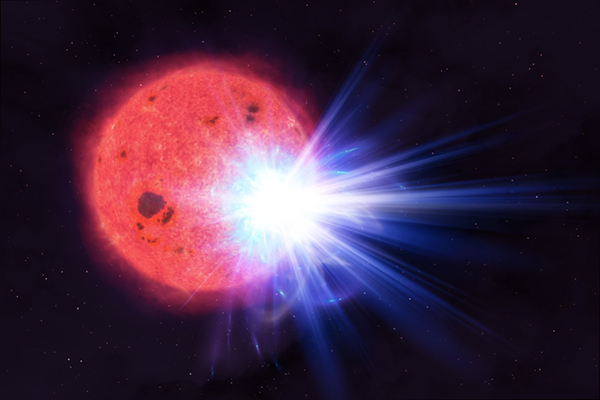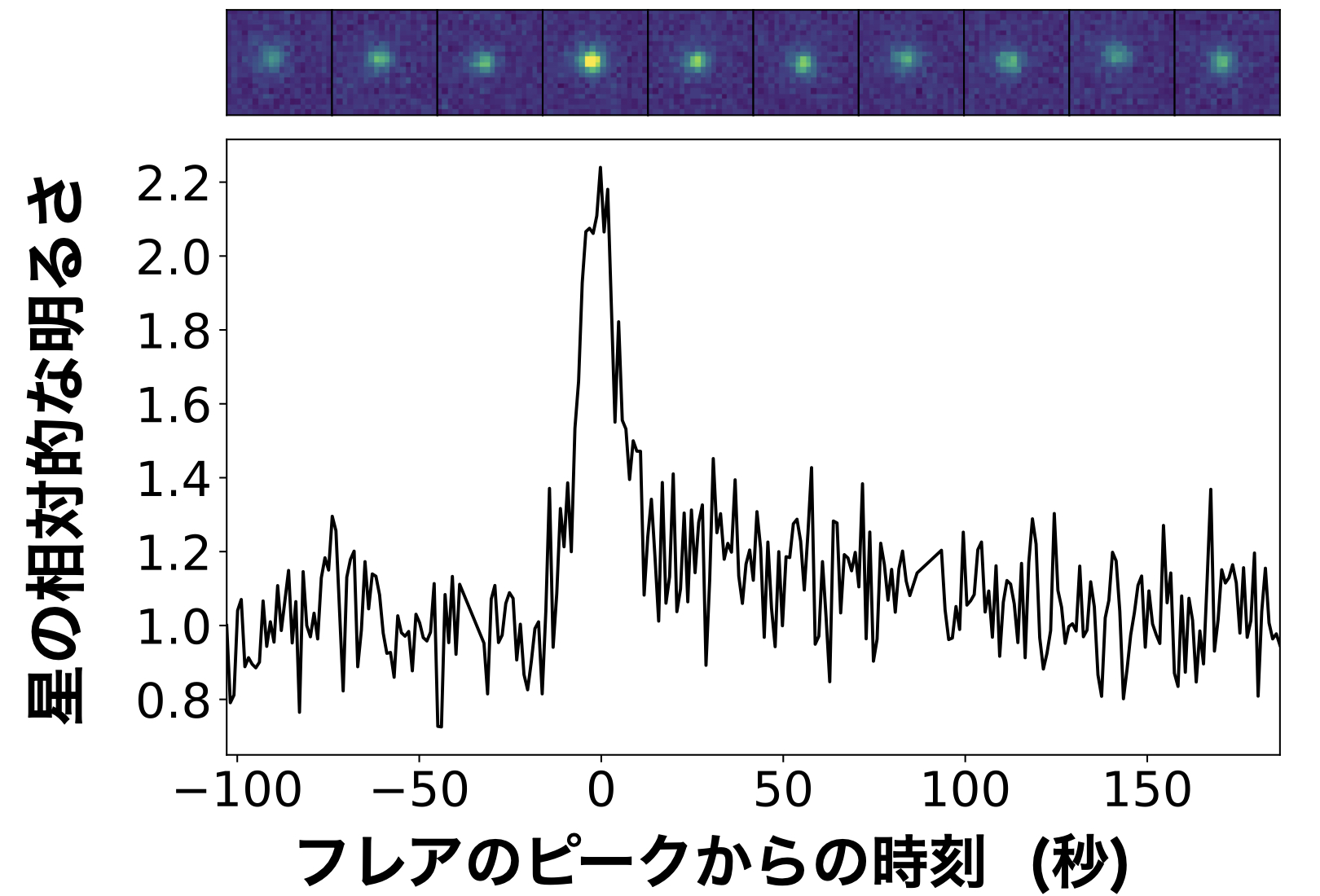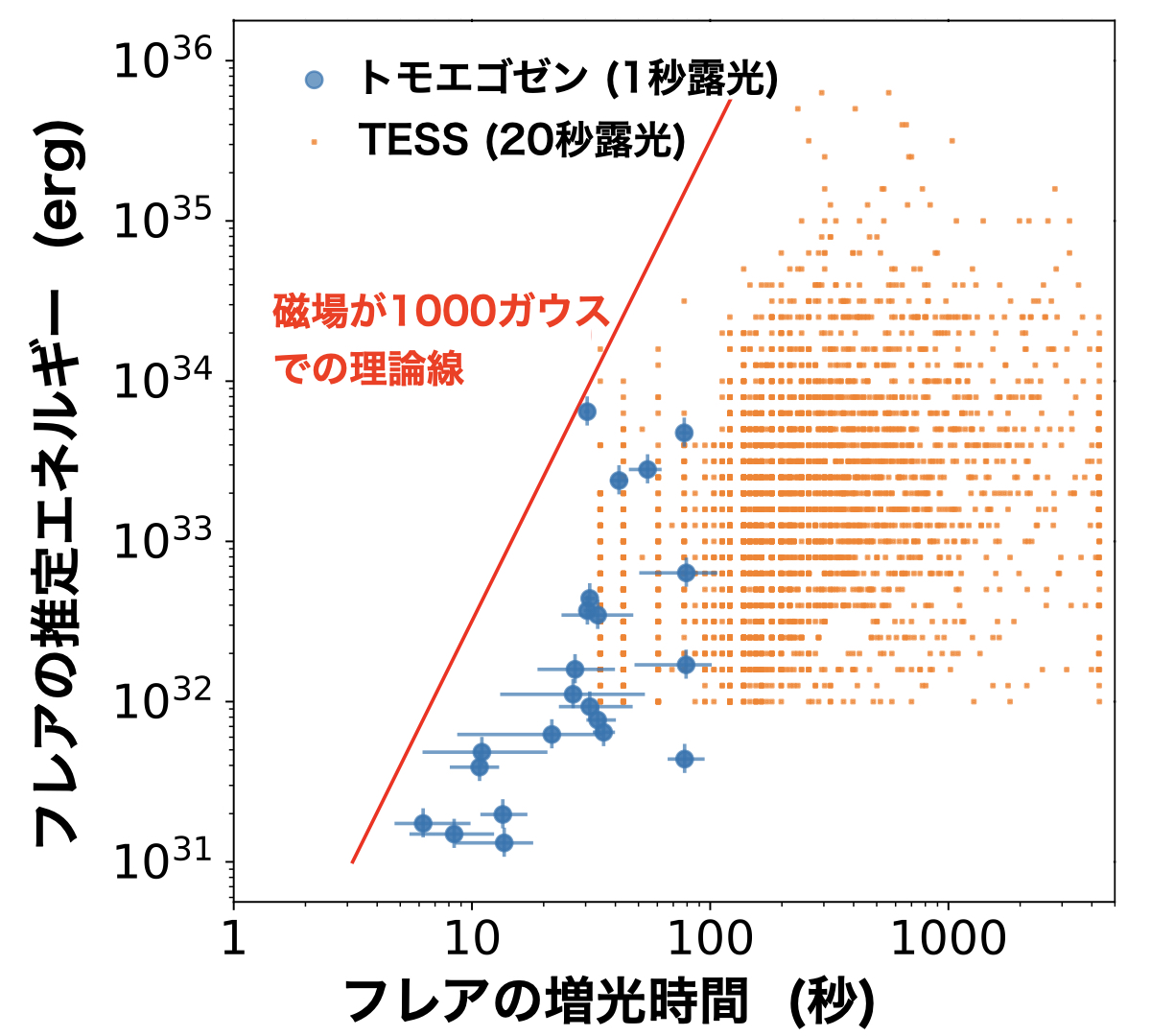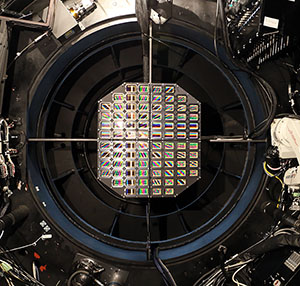DATE2022.08.09 #Press Releases
Red Dwarfs in Short Flash Phenomena Captured by Wide-Field Video Imaging
Disclaimer: machine translated by DeepL which may contain errors.
Masatake Aizawa (Postdoctoral Fellow, Li Zhengdao Institute, Shanghai Jiao Tong University)
Kazumi Kashiyama, Associate Professor, Tohoku University
Fumihiro Naokawa (Department of Physics, Master's Program)
Ryo Osawa (Project Assistant Professor, Institute of Astronomy)
Shigeyuki Sakamukai (Associate Professor, Institute of Astronomy)
Key points of the presentation
- We have conducted high-speed observations of about 5,700 red dwarfs using Kiso Observatory (KISO) at The University of Tokyo, and detected 22 flares with a short brightening time of a few tens of seconds.
- The results show that strong, short-lived flares occur on average about once a day on active red dwarfs.
- Short-lived, intense flares such as those detected in this study may have implications for the discussion of the possibility of life on exoplanets around red dwarfs.
Presentation Summary
A research group led by Dr. Masataka Aizawa, Postdoctoral Researcher at the Li Zhengdao Institute of Shanghai Jiao Tong University, Associate Professor Kazumi Kashiyama of Tohoku University, Graduate Student Fumihiro Naokawa, Project Associate Professor Ryo Osawa, and Associate Professor Shigeyuki Sakamukai of the Graduate School of Science at the University of Tokyo has observed approximately 5700 red dwarf stars (Note 1) with the camera "Tomoego" on the 105cm Kiso Schmidt telescope of the University of Tokyo. (Note 1), they conducted fast monitoring observations of approximat e ly 5,700 red dwarfs (Note 2) in a fraction of a second, taking advantage of the wide-field movie shooting function of the camera "Tomoegosen (Note 3)" installed in the 105cm telescope at the University of Tokyo. As a result, they detected a total of 22 flares (e.g., the brightness of a star doubles within 10 seconds), which had been difficult to observe in the past, in a short period of time of less than several tens of seconds (the minimum brightening time is 6 seconds).
The research group succeeded in capturing the detailed luminosity variations of the flares with this high-speed observation, and showed that the observations are consistent with the conventional scenario that stellar flares are driven by the release of energy from the magnetic field on the star's surface. The group also found that short-duration flares like the one detected in this study occur on average about once perday in active red dwarfs. This suggests that strong, short-lived flares occur routinely on red dwarfs, and may have implications for the discussion of the possibility of life on exoplanets around red dwarfs. Taking advantage of Tomogosen's wide field of view and high temporal resolution, we will continue to monitor various types of stars and young stars to further elucidate the generation mechanism of short duration flares.
Announcement
Stellar flares are sudden explosions that occur on the surface of stars. Stellar flares occur frequently in the Sun, and in particular, solar flares with large energy are closely related to our daily life, causing radio interference and power outages. However, large-scale survey observations with the Kepler Space Telescope (KST) and the TESS Space Telescope (TESS) have detected many stellar flares and dramatically improved our understanding of the mechanism of stellar flare generation. The understanding of the mechanism of stellar flare generation has progressed dramatically.
In 2021, Proxima Centauri, a red dwarf star with a planet in the habitable zone (Note 3 ), detected a brief flare that shows rapid brightening in the ultraviolet and radio wavelengths within a few seconds, attracting great attention to the flare generation mechanism and its impact on the planet. However, since previous survey observations with the Kepler space telescope and other telescopes have only been able to acquire moving images in increments of several 10 seconds to several 10 minutes, it has been difficult to detect flares that dramatically increase in intensity over a short period of time, from a few seconds to several 10 seconds. Therefore, even the basic characteristics of short duration flares, such as whether they are a universal phenomenon and how much energy they emit at maximum, have not yet been clarified.
Our research group therefore decided to apply Tomoegosen's ability to capture moving images with a wide field of view every second to the search for stellar flares, and conducted a search for short duration flares from red dwarf stars. Tomoegosen can observe approximately several hundred red dwarfs at once, making it possible to efficiently search for flares that occur within a short period of time. In this study, we analyzed 40 hours of data acquired with Tomo Egozen in 2019-2020, which is suitable for flare searches, and examined the short-time variations in the brightness of a total of about 5,700 red dwarfs. As a result, we succeeded in detecting 22 short duration and strong flares (Figure 1).

Figure 1: An artist's impression of a short-time flare on the surface of a red dwarf. (Image credit: The University of Tokyo's Kiso Observatory)
The flares detected in this study exhibited brightening ranging from several percent to a maximum of 20 times brighter than the normal brightness in a short period of time ranging from a few seconds to several tens of seconds (Figure 2). These are the shortest brightening events among the stellar flares detected so far, suggesting that an energy release due to an extremely strong magnetic field is occurring (Figure 3). The research group also used data acquired by other telescopes to examine the spectrum and rotational period of the red dwarf for which the flare was detected.

Figure 2: An example of the luminosity variation of the detected red dwarf flare. The brightness of the star increases by a factor of about 2 in about 10 seconds. The upper row shows images corresponding to 10-second exposures ( corresponding to a 24 arcsec x 24 arcsec field of view ) at intervals of about 28 arcsec, corresponding to the time of the luminosity curve, indicating that the star is also brightening in the image at the moment of the flare.

Figure 3: Red dwarf flare intensification time vs. energy (erg is in units of energy ). The stellar flare detected by Tomogosen (light blue dots ) and the stellar flare detected by the TESS space telescope (orange dots ) are shown. The red line is the theoretically expected relationship between flare timescale and energy assuming a 1000 Gauss magnetic field.
The results confirm the presence of strongly active emission lines in the spectra of 10 of the 11 objects for which spectroscopic data exist. This suggests that the detected short-time flares are more likely to occur in active stars. Assuming that all of the detected short-time flares occur in active stars, it is estimated that a short-time flare like the one detected in this study occurs approximately once aday, suggesting that short-time flares may occur routinely in active red dwarfs.
Generally, stellar flares show a rapid increase in brightness, followed by a rapid decrease in brightness, and finally a gradual decrease in brightness. The high-speed observation with Tomoegosen has revealed this sequence of luminosity changes in detail (Figure 4). In particular, the time length of the dimming is longer than the time length of the brightening, with a maximum difference of about 10 times. We proposed a scenario in which the stellar atmosphere is intensely heated by the release of a large amount of energy due to magnetic reconnection (Note 4) and light leaks out of it to explain the series of luminosity variations in this short-time flare, and showed that this scenario is consistent with the observed luminosity variations.

Figure 4: Luminosity variations of 22 stellar flares detected in this study. The horizontal axis shows time and the vertical axis shows the relative brightness variability of the stars. The blue line in the figure corresponds to the width of the 30 second length.
In this study, we were able to detect short-lived and strong flares that have been difficult to detect so far by means of high-speed observations with split-second increments. Strong flares that intensify in a short period of time, such as those detected in this study, may be accompanied by energetic particles or ultraviolet rays, and may have an impact on the debate on the habitability of exoplanets. In the future, Tomogosen will continue to search for unknown second variability including flares by examining different types of stars from red dwarfs and young stars.
This work was supported by Grants-in-Aid for Scientific Research (JP16H06341, JP17H06363, JP18H05223, JP18H01261, JP20K04010, JP20K14512, JP20H01904, JP21H04491) and Inter-university Cooperative Program on Optical and Infrared Astronomy The project was supported by the Optical and Infrared Astronomy Inter-University Cooperation Project.
Journals
-
Journal name Publications of the Astronomical Society of JapanTitle of paper Fast optical flares from M dwarfs detected by a one-second-cadence survey with Tomo-e Gozen Author(s) Masataka Aizawa*, Kojiro Kawana, Kazumi Kashiyama, Ryou Ohsawa, Hajime Kawahara, Fumihiro Naokawa, Tomoyuki Tajiri, Noriaki Arima, Hanchun Jiang, Tilman Hartwig, Kot Kotaro Kuroda, Tilman Hartwig Tilman Hartwig, Kotaro Fujisawa, Toshikazu Shigeyama, Ko Arimatsu, Mamoru Doi, Toshihiro Kasuga, Naoto Kobayashi, Sohei Kondo, Yuki Mori, Shin-ichiro Okumura, Sat Satoshi Mori, Shin-ichiro Ichiro Okumura, Satoshi Takita, Shigeyuki SakoDOI Number https://doi.org/10.1093/pasj/psac056 Publication URL
Terminology
Note 1 Red dwarf
Red dwarfs are the coldest group of stars among the fixed stars. Their radius and mass are only a few 10% of the Sun's, and their typical surface temperature is less than 4000 K, which is lower than the Sun's. Red dwarfs are the closest stars to the Sun in terms of distance. There are many red dwarfs, including Proxima Centauri, the closest star to the Sun in distance, and they are considered the most common stars in the solar neighborhood. ↑
Note 2: Wide-field movie camera Tomo-e Gozen
Image credit: The University of Tokyo, Kiso Observatory
Tomo-e Gozen is the world's first wide-field video camera for the 105cm Schmidt Telescope at the University of Tokyo's Kiso Observatory (Kiso County, Nagano Prefecture, Japan). Developed mainly by The University of Tokyo, it can monitor a wide area of the sky with high temporal resolution using a total of 84 CMOS image sensors. (Image credit: The University of Tokyo ,Kiso Observatory). https://tomoe.mtk.ioa.s.u-tokyo.ac.jp/ja/ ↑
Note 3: Habitable Zone
Refers to the region around a star where a planet with sufficient atmospheric pressure, such as the Earth, can have liquid water. Basically, it is a region near a star where the Earth receives the same amount of radiation energy as the Earth receives from the Sun. ↑up
Note 4 Magnetic Reconnection
Magnetic reconnection refers to the reconnection of magnetic field lines on the surface of a star, and it is believed that the excess magnetic field energy generated during the reconnection is converted into electron kinetic energy, which drives flares. Observations of solar flares have supported the theory that flares are driven by magnetic reconnection, and flares are thought to be produced by the same mechanism in stellar flares. ↑up



